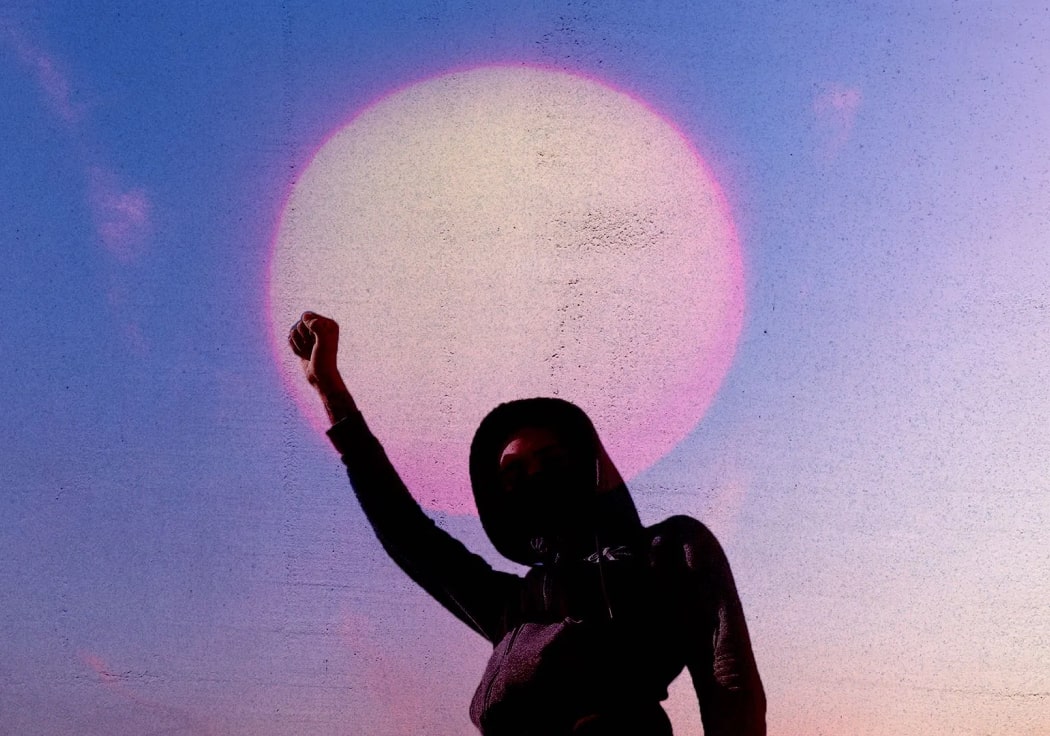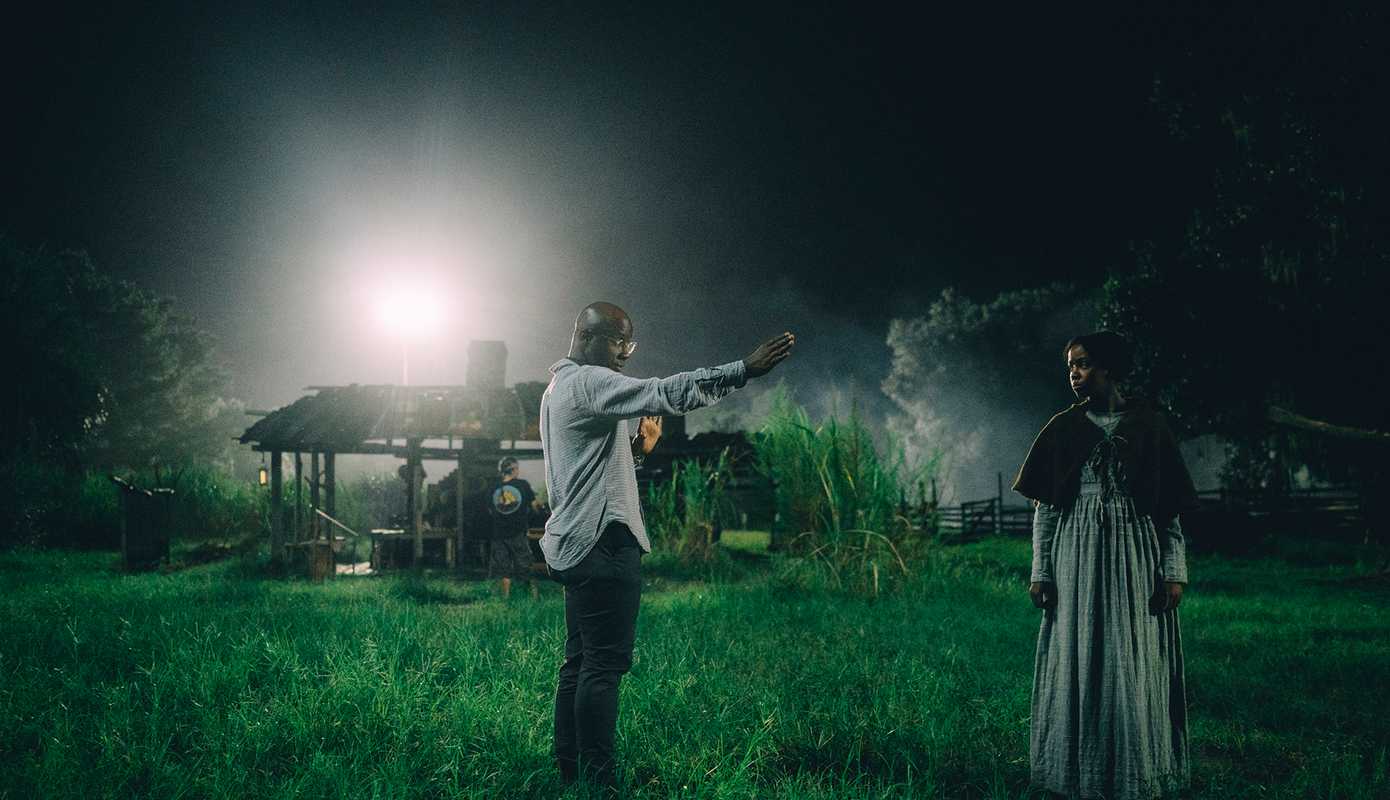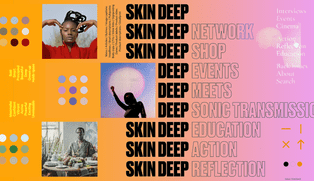When we spoke in April, Barry Jenkins was still processing reactions to the recently-released trailer for his new Amazon Prime series Underground Railroad. “The conversation is evolving differently than I expected,” he tells me via Zoom from his home in California, “but I’m here for it.”
Jenkins implies that some were already disparaging the show on Twitter, comparing it to recent Black-mutilation-as-genre projects (my phrasing, not his) – a criticism he objects to, not least because at that point his detractors had not actually watched the show. I had watched all ten hours of it in less than two days. I was still feeling the reverb in my body as we spoke, anxiety prickling between my muscles, weight collecting in my chest.
The Underground Railroad is undeniably violent; unavoidably so. It depicts an American landscape so alive it breathes, teeming with sweat and flesh, making plain the structures that continue to shape race, class, and capital in the United States. But while I do not recommend consuming all ten episodes as quickly as I did, it is clear that Jenkins’ storytelling contains so much more than brutal, uncritical spectacle.
“If there’s one thing that distinguishes this show from others’ treatment of the subject, or the other things that are in the ether right now,” Jenkins tells me, “it is that my prerogative – my engine – is about asking what they did.”
The story Jenkins wants to tell is one that doesn’t limit Black peoples’ capacity of being to their subjection alone. His version of the protagonist Cora Randall – whose journey across the Antebellum South provides the story’s structural landscape – believes there is possibility beyond her material condition. And so she keeps going, and going, and going, through a world designed to enact the totality of its violence on her body. Through it all, Jenkins’ adaptation never diminishes the centrality of Black life – Black doing – in the American project, despite depicting a time so heavily characterised by Black social death.
When I first read the 2016 Colston Whitehead novel on which Jenkins’ series is based, I was living in Brooklyn on a tenuous student visa, getting by on childminding and snacks from an unpaid internship. In the way we often do when reading fictional narratives, I hitched all my hopes to Cora. She was young and Black and journeying toward an impossible unknown – freedom – and I was young and Black, oceans away and mildly estranged from the communities that raised me, desperately hoping to find steady work to avoid deportation. I was desperate to finish the book, to find out if Cora ever got to experience relief.
I need to tell the truth about what we’re depicting
Barry Jenkins
Jenkins’ connection to the character of Cora was the story of her mother: the infamous Mabel, played by Sheila Atim, a runaway that slave patrols could never find. His Cora, played by Thuso Mbedu, is therefore consumed by maternal abandonment. She is the child of a parent who supposedly left her behind in order to find her own freedom.
“The first time I finished [the novel] I thought, there’s just no way; this woman did not abandon her child,” he said. “And so then [in the adaptation] I thought, Cora has had to go on this journey – because I’m on the same journey with my mother – where she evolves to understand why her mother made the choice that she did, and how she is to live her life knowing she might have to make similar choices.”
Jenkins points out that children are often largely absent from depictions of slavery. He questions how their omission might shape cultural understandings of the institution and its afterlives – and what including children might change.
“I remember Kanye West went to TMZ and said slavery was a choice,” he says. “And I kind of hated him when he said that.” Yet Jenkins doesn’t necessarily disagree that a choice was made. Animated, he explains, “If they wanted to, they could have found a way to release themselves from this degradation; I’m talking about some version of ending themselves. Or they could have taken up arms, but if there was a mass revolt, everybody would have died. And so what they did was decide that they were going to protect the children. And when you view it that way – not what was done to them, but what they did – they chose to protect those children.”
“My ancestors are a part of the greatest collective sacrifice this world has ever seen,” he says. “My ancestors are part of the greatest collective act of parenting the world has ever seen.”
Protecting the children meant seeing them as human and not capital, it meant envisioning a future that contradicted everything Cora knew from her experience of being alive. By relocating agency in this way – recognising it in both sacrifice and imagination – Jenkins highlights what drew me to Cora in the first place. It is her framing of the inevitable as not bondage; it is her ceaseless reach toward impossibility.
On the problem of depicting the realities of slavery without “reveling in the degradation of the character,” as he puts it, Jenkins again employs a kind of relocation of agency: prioritising what they did, over what was done to them. “I need to tell the truth about what we’re depicting,” he says, but there is “a moral line” when it comes to presenting brutality on screen. “It’s difficult because there’s no intellectual way, there’s no mathematical way to understand what that [line] is.”
I think of the gruesome death of Big Anthony, a character who we see escape at the beginning and return captured at the end of the first episode. Jenkins remembers seeing photos of the aftermath of lynchings when he was young, and he thought about how inert they rendered the person who had been killed. In the Big Anthony scene – in which we see his freshly whipped skin where the flesh has been pulled away, as wood for a bonfire is arranged underneath his suspended body – Jenkins attempts to stop short of the moral line by giving voice to Big Anthony. In the moment before the new plantation owner strikes a match to start the bonfire, Big Anthony exclaims: “no more masters, no more slaves.” He is speaking to the people who are witnessing the trauma, the people he cares about. And then he says to Terrance, “God damn you.”
I remember the length of that scene, its lingering shots and the moments where the frame seems incapable of containing the violence. I think back to finally reaching the end of that episode and saying to myself: alright, you probably won’t see another Black body burnt alive. No matter how central the brutalisation of Black flesh was and still is to reifying racial hierarchy, I find there is no way I can ever prepare myself for its depictions. If there is a way to make the supposed importance of bearing witness outweigh the embodied terror of doing so, I don’t know what it is.
“It’s difficult man,” Jenkins acknowledges again. “And yet, I had to show what had happened, because that is the moment our main characters decide: this is enough, we must go.”
Jenkins tells me he wasn’t interested in showing close ups of whips hitting flesh; the first whipping scene intentionally plays out completely in a wide shot at night. Rather it was important for him to show the effects the brutality was having on the witnesses, and so during scenes of violence the camera comes off the acute trauma and on to those forced into the role of spectator.
Whiteness is not naturally the centre; it must force itself to be.
Nkenna Akunna
Spectatorship – as action, as affirmation, as passive violence – is important in Jenkins’ reimagining. Twelve minutes into the first episode, just before that first whipping scene, the plantation owner and his brother demand to see a little Black boy who can famously recite the Declaration of Independence. What follows illustrates the precedence that ‘white looking’ has over Black life, how white looking can curdle Black terror into entertainment.
The little Black boy is revealed to have died months ago, and so another Black boy is called in his place. He stutters with fear and everyone watches. Moments before the two white people enter the scene, every Black person is dancing and drinking and laughing. Now they stand statuesque, their shoulders rounded and heads bowed. For those white overseers, Black terror is delicious. It is something to play with, to be enjoyed – and it requires Black looking, a Black audience. The owner’s brother soon takes over the plantation and his vision as overseer is viscerally translated, defining the depths of our own spectatorship when he lights the match that burns Big Anthony alive.
The distinction between Black looking and white looking – the subordination of one being dependent on the power of the other – is so central to Jenkins’ structuring of life within the show, that I cannot help but think of how such distinction structures our own viewing experience, and how industries like Hollywood determine the efficacy of viewing Black violence. And so what becomes the role of the audience? What does it do, being a spectator to the brutality of a world that “does not, and can not,” as writer Doreen St Felix names, “envision the place beyond Exodus”?
It is significant that Jenkins’ first introduction of whiteness into the series – that Declaration of Independence scene – is one of interruption on Black life. Powerful, relentless, wildly depraved, but an interruption all the same. Whiteness is not naturally the centre; it must force itself to be. Later in the series, when Cora reaches South Carolina and works as a paid actor in a slavery exhibit, she overhears her white manager training a white actor in his use of a whip. “Authenticity is our watch word,” he says as he demonstrates, overcome by his own passion. Whiteness may structure possibility for Cora, working to limit and define her wherever she goes, but it is forever an interruption. It upsets, disturbs. It is the spectre behind anxiously prickling muscles and a weighted chest. It is the thing you wish would stop looking. The thing you wish was never there.
I never did finish the book in 2016. The childminding gig ended before I could, and life – elections, and dread and such – took precedence. The need to know if Cora experienced relief receded, in many ways revealing itself to be my own investment in a vision of America that has never shown itself to be true. What matters is that Cora, at least in the story, was alive. Despite the promises of her world, it was her agency – Black doing – that made a way toward impossibility. By the end of Jenkins’ Underground Railroad, Cora’s state is not one that could be categorised as anything resembling the calm breath of safety. But there is hope. The story of a young Black woman journeying across 19th-century North America – and staying alive – may always be one of hope.
Stay in touch. Subscribe to Skin Deep’s monthly newsletter.







